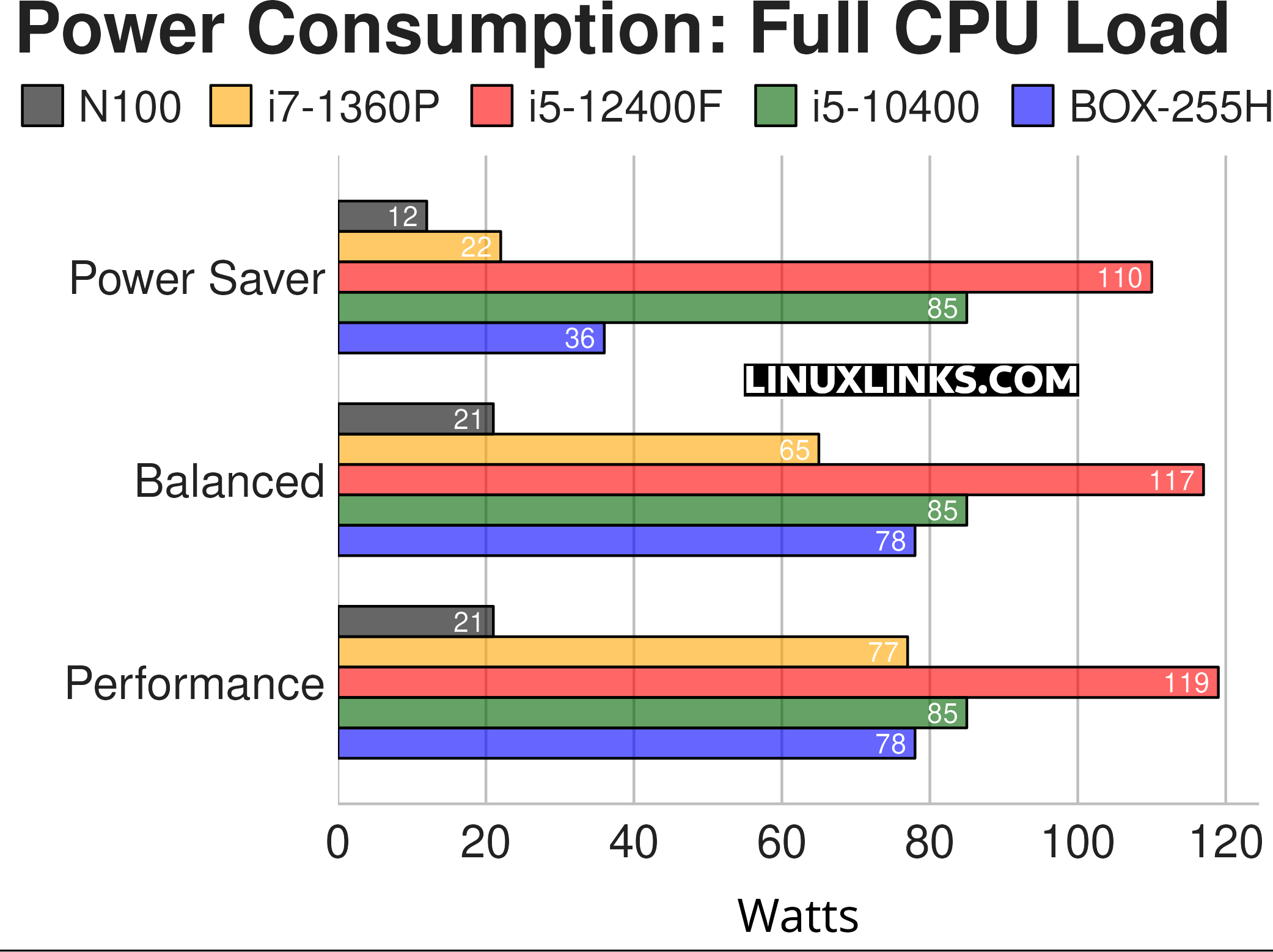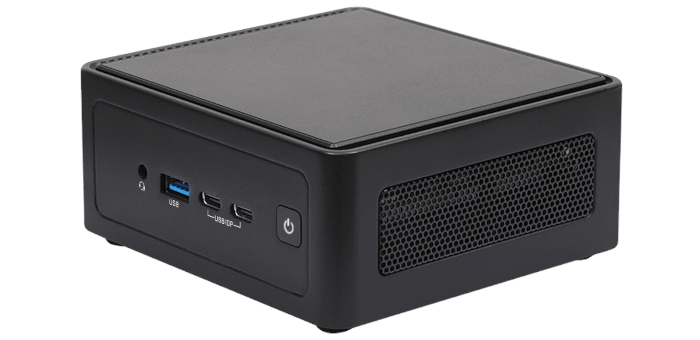I’m using s-tui to stress the CPU. It provides a convenient frontend to the stress utility.

The ASRock’s results are again impressive. It’s faster than any of the machines yet its power draw is lower under full CPU load had the i5-12400F machine only had onboard graphics. The ASRock NUC is significantly faster than the 10th generation Intel desktop machine yet draws fewer watts.
It’ll come as no surprise that the N100 machine has very low power consumption. But compared to the other machines, its processor is very slow.
Observations
- The BOX-255H is the only machine here with three types of cores.
- Under full CPU load in balanced or performance power profile, the P-Cores run at 4000 MHz, the E-Cores run at 3600 MHz, and the low power E-Cores run at 1400 MHz.
- Under full CPU load in the power save profile, the P-Cores run at 2300 MHz, the E-Cores run at 1900 MHz, and the low power E-Cores run at 1200 MHz.
- The three types of cores operate at higher frequencies when the CPU is not fully stressed.
- Power usage figures are considerably higher if other system components (GPU, disk etc) are also stressed. The chart reflects power consumption stressing the CPU only. The maximum power consumption drawn when all system components are stressed is considerably higher for all machines.
Next page: Page 4 – Electricity costs
Pages in this article:
Page 1 – Power Consumption With System Idle
Page 2 – Power Consumption With Light Usage
Page 3 – Power Consumption With CPU Stressed
Page 4 – Electricity Costs
Complete list of articles in this series:
| ASRock Industrial NUC BOX-255H | |
|---|---|
| Introduction | Introduction to the series and interrogation of the NUC BOX-255H |
| Benchmarks | Benchmarking the NUC BOX-255H |
| Power | Testing and comparing the power consumption |
| Stable Diffusion | Deep Learning with Stable Diffusion |
| Audacity AI Plugins | Let's explore OpenVINO AI Plugins for Audacity |
| 3 Types of Cores | P-cores, E-cores and low power E-cores performance |
| GIMP AI Plugins | Stable Diffusion, Super Resolution, Semantic Segmentation |
| Ubuntu | Upgrading from Ubuntu 25.04 to Ubuntu 25.10 |
| Image Upscaling Tools | A survey of upscaling tools |
| Noise | Comparing the machine's noise with other mini PCs |
